Discover 15 hidden attractions, cool sights, and unusual things to do in Constanța (Romania). Don't miss out on these must-see attractions: History and Archaeology Museum, Constanța Casino, and Carol I Mosque. Also, be sure to include Hünkar Mosque in your itinerary.
Below, you can find the list of the most amazing places you should visit in Constanța (Constanța).
Table of Contents
History and Archaeology Museum

The Constanța History and Archaeology Museum is a museum located at 12 Piața Ovidiu, Constanța, Romania.[1]
Address: Piața Ovidiu nr. 12, Constanța
Constanța Casino

Also known as: Cazinoul din Constanța
Archaeological museum in Constanța, Romania. The Constanța Casino is a defunct casino, located in Constanța, Romania. It has been designated by the Romanian Ministry of Culture and National Patrimony as a historic monument. The casino is on the Constanța seafront along the Black Sea in the historic Peninsulă District of the city. Three different buildings were built in the district to hold a casino, with the first structure being erected of wood in 1880. Considered a symbol of the city of Constanța, the current structure was built in Art Nouveau style, designed and built according to the plans of Daniel Renard and inaugurated in August 1910. The current Casino was used for gambling operations for 38 years, with interruption due to the two world wars: attacked and bombed by Bulgarian and German troops in World War I, ravaged in World War II and, at one point, acted as a makeshift wartime hospital. In 1948 it was transformed into a community centre and in 1960 it was handed to the National Office of Tourism which transformed into a restaurant. The last major repairs took place in 1986–1988, and the building was abandoned until 2019 and currently it's under renovation again.[2]
Address: Bd. Regina Elisabeta nr. 2, 900733 Constanța
Carol I Mosque
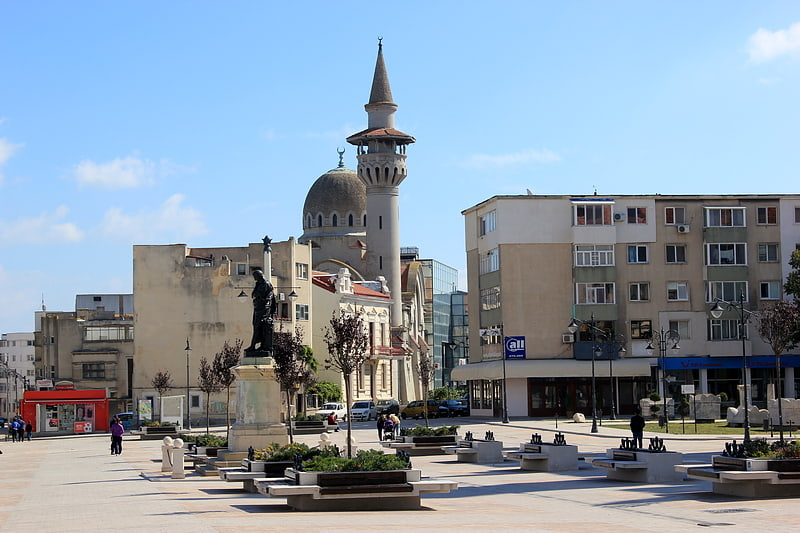
Also known as: Marea Moschee din Constanța
Mosque in Constanța, Romania. The Grand Mosque of Constanța, originally known as the Carol I Mosque, is a mosque in Constanța, Romania. It is listed as an historic monument by the Romanian National Institute of Historical Monuments.
The mosque is referred to by Constanța's Islamic community as the King's Mosque (Romanian: Geamia Regelui, Turkish: Kral camisi).[3]
Address: Strada Arhiepiscopiei 9, 900178 Constanța
Hünkar Mosque
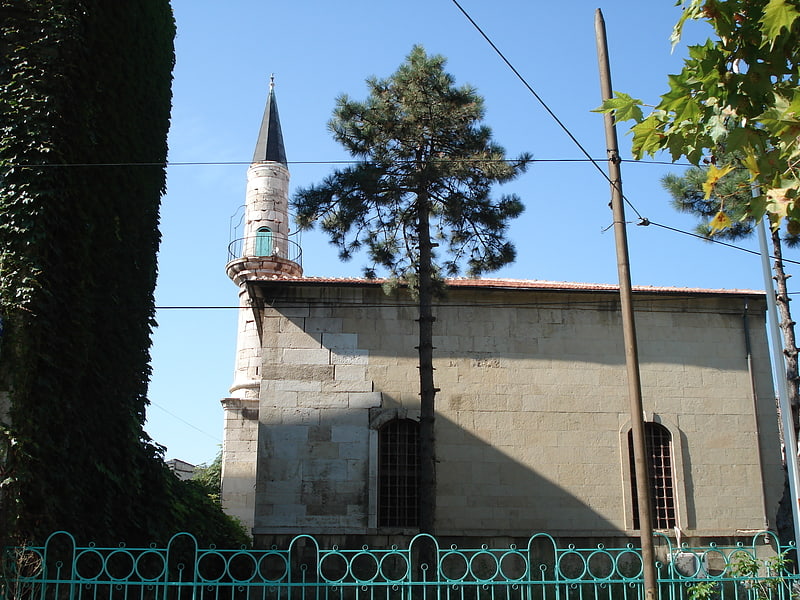
The Hünkar Mosque is a mosque located at 41 Tomis Boulevard, Constanța, Romania.
The mosque was completed in 1869, nine years before Northern Dobruja became part of Romania, during the reign of Ottoman Sultan Abdulaziz. Hence, it is also known as the Aziziye Mosque, and his tughra features on the left side of the entrance, within an oval medallion of marble. The minaret is 24 meters high, dominating its surroundings. The building is in a simple Ottoman style, with a tile roof, and is cube-shaped like the Kaaba. It is made of carved stone that came from the entrance gate to the Ottoman fortress, the walls of which were demolished in 1828. In turn, the stone for those walls came from the Greco-Roman vestiges of ancient Tomis. The interior carpet was donated in 2001 by Turkish President Ahmet Necdet Sezer.
During the interwar period, the mosque came close to demolition, with proponents arguing that the structurally weak minaret posed a threat to passersby. Historian Nicolae Iorga successfully refuted this claim. During World War II, Soviet bombing seriously damaged the mosque, and its total razing was again suggested. It underwent restoration in the years after the Romanian Revolution, at the same time becoming choked by new construction in the neighborhood.
The mosque is listed as a historic monument by Romania's Ministry of Culture and Religious Affairs.[4]
Address: 41 Bulevardul Tomis, Constanța
Farul Genovez

Monument in Constanța, Romania. The Genoese Lighthouse is a lighthouse and historic monument situated on the waterfront of the city of Constanța, Romania behind a group of statues which has in its center the bust of Mihai Eminescu, sculpted by Oscar Han. It is located near Constanța Casino.
The lighthouse stands approximately eight meters high and is rectangular at its base to a height of about three and a half meters, and is octagonal above that. The interior of the lighthouse is cylindrical, with a spiral staircase in stone. The structure itself stands upon a pedestal base consisting of two steps, and is finished at the top with brackets supporting the eaves, upon which the metal housing of the lantern room also forms the roof.
The original lighthouse was built around 1300 by the Genoese who traded at the port, to guide ships at sea from a range of about two nautical miles out to the small port of Constanța. It was rebuilt between 1858-1860 by French-Armenian engineer Artin Aslan, by order of the British-owned Danube and Black Sea Railway Company, to honor the Genoese merchants who established a flourishing sea trade community.[5]
Cathedral of Saints Peter and Paul
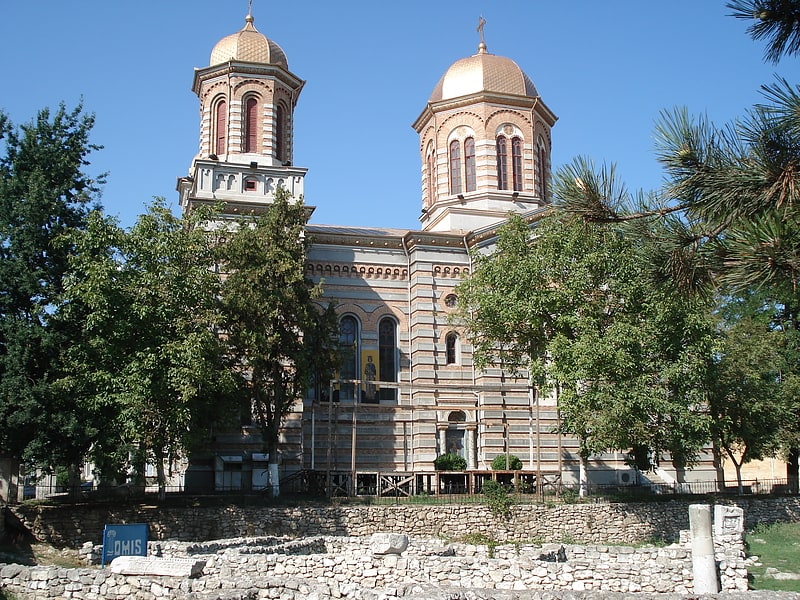
Also known as: Catedrala Sfinții Petru și Pavel din Constanța
Orthodox church in Constanța, Romania. The Cathedral of Saints Peter and Paul, Constanța, located at 25 Arhiepiscopiei Street, Constanța, Romania, is the seat of the Romanian Orthodox Archbishop of Tomis, as well as a monastery. Situated between Ovid Square and the Black Sea in front of the Archbishop's Palace, it was built on the city's peninsular zone in 1883-1885 following plans by architects Alexandru Orăscu and Carol Benesch and, for the interior, Ion Mincu. The cornerstone was laid on 4 September 1883, during the reign of Iosif Gheorghian, Metropolitan of All Romania. The church was consecrated on 22 May 1895.
The building served as a parish church until 1923, when the Diocese of Constanța was established. In that year it became a cathedral, serving as such until 3 August 1941, when its altar and iconostasis, along with icons and paintings, were partly destroyed by aerial bombardment during World War II. It was restored after the war, from 1946–1951. Patriarch Justinian Marina and Bishop Chesarie Păunescu re-consecrated it on 14 January 1951; at that time, Păunescu's seat was moved from Constanța to Galați and the building once again became a parish church. Exterior repairs took place from 1957–1959. When the diocese at Galați became an archdiocese on 9 November 1975, a vicar bishop began serving at Constanța, returning the church to the status of cathedral, once again becoming an archdiocesan cathedral when the Tomis Archdiocese was revived in 1990.
The cathedral, in Greco-Roman style, of pressed brick, has a wide facade and a 35 m tower. Among the sculpted works are the oak iconostasis and choir, as well as candelabras and candle stands (made of a bronze-brass alloy), also designed by Mincu and executed in Paris. The frescoes were done by two Bucharest painters between September 1959 and November 1965. That month, when they were finished, Bishop Păunescu consecrated the church once again. The relics of Saint Panteleimon, donated in 1931, along with part of the relics of Saints Auxentius of Bithynia and Simeon Stylites, are kept inside. Also present are an icon of the Virgin Mary, said to be wonder-working, and the relics of Saints Epictetus and Astion, discovered in August 2001. On 1 December 2001, the latter were deposited in the cathedral, which on that date acquired the additional function of monastery; since that time, liturgies have been held according to monastic rites.
The Archbishop's Palace, begun in 1925, is located beside the cathedral, to the west. The cornerstone was laid by Patriarch Miron Cristea together with Bishops Grigorie Comșa of Arad and Ilarie Puiu of Hotin; Ilarie Teodorescu was then Bishop of Constanța.[6]
Address: Strada Arhiepiscopiei 25, 900742 Constanța
Great Synagogue
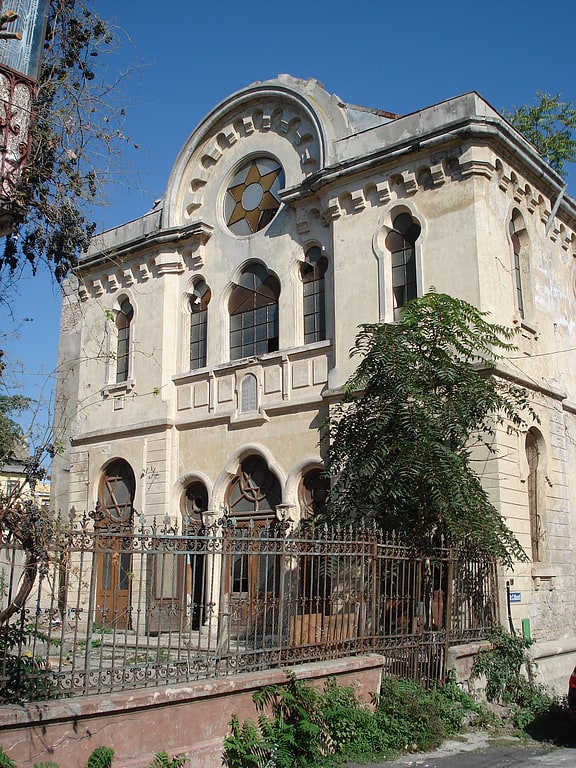
Also known as: Sinagoga Mare din Constanța
Synagogue in Constanța, Romania. The Great Synagogue of Constanța is a disused former Ashkenazi synagogue ”for the Jews called « Polish »”, located at 2 C. A. Rosetti Street, corner with Petru Rareş Street in the city of Constanța, Romania.
The synagogue was built between 1910 and 1914 in a Moorish Revival architectural style on the site of an earlier synagogue, erected in 1867/1872, in the place of an older synagogue, built after a firman of Sultan Abdul Azis.The first steps were initiated in 1907, but the original building application submitted in 1908 was denied due to concerns about the strength of the proposed dome and galleries. Architect Anghel Păunescu thus replaced the proposed dome with a semi-cylindrical vault intended to express the same "seduction of the curved space".
In the interwar period, there had been two main synagogues in Constanța: there was also a Sephardic Temple, built between 1905 and 1908 in a Catalan Gothic architectural style, The sephardic synagogue was heavily damaged during the Second World War when it was used as an ammunition warehouse, later further damaged by an earthquake, and was demolished in 1989 under the rule of Nicolae Ceaușescu.[7]
Address: 2 Strada C. A. Rosetti, Constanța
Mamaia
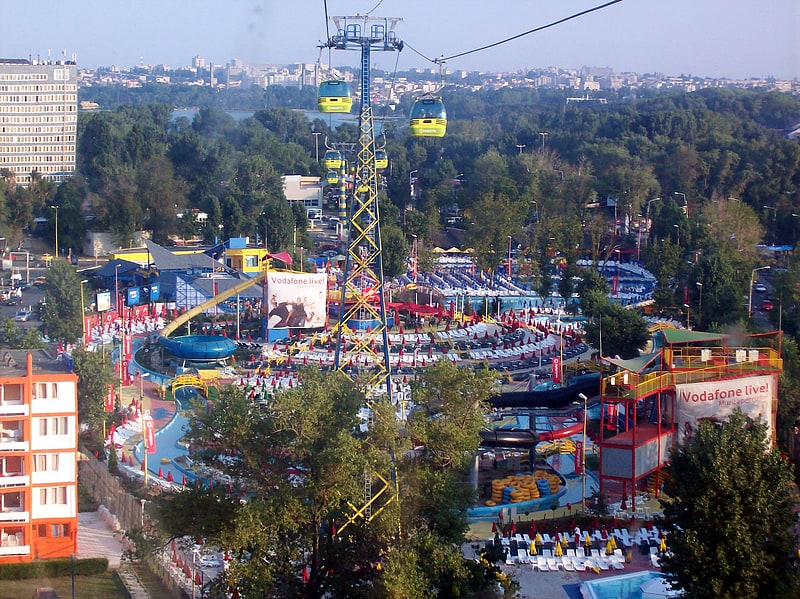
City in Romania. Mamaia is a resort on the Romanian Black Sea shore and a district of Constanța.
Considered to be Romania's most popular resort, Mamaia is situated immediately north-east of Constanța's city center. It has almost no full-time residents, being populated mostly during the summer.
Mamaia lies on a strip of land 8 km (5 mi) in length and only 300 m (330 yd) in width, between the Black Sea and Lake Siutghiol.
The beach season is at its best between mid June and early September, when average daytime temperatures range between 25 and 30 °C (77 and 86 °F). The water stays warm until mid autumn.
Hotels range from mid-end to exclusive 4- and 5-star hotels and private clubs. There are also camping sites in the north.
The 11th reunion of the Central European heads of state took place in Mamaia on 27–28 May 2004.[8]
Marine Museum
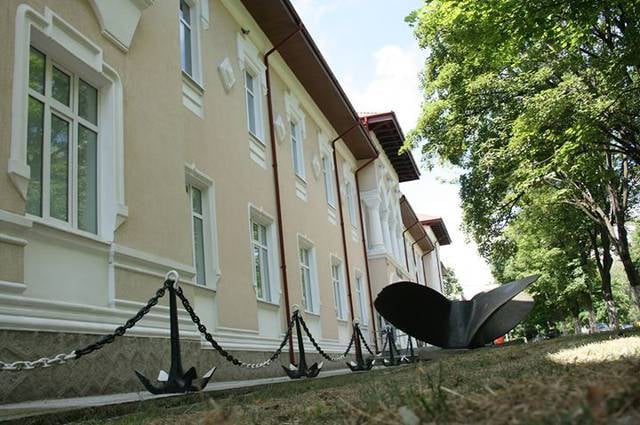
Museum
Address: Strada Traian nr. 55, Constanța
Folk Art Museum
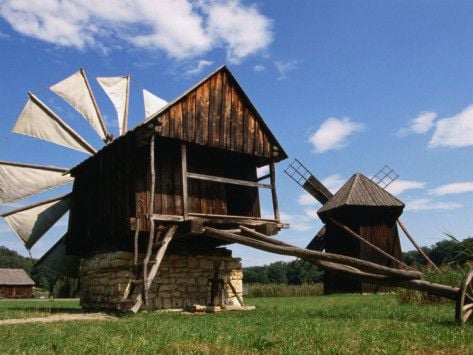
Museum
Address: 32 Bulevardul Tomis, Constanța
Art Museum
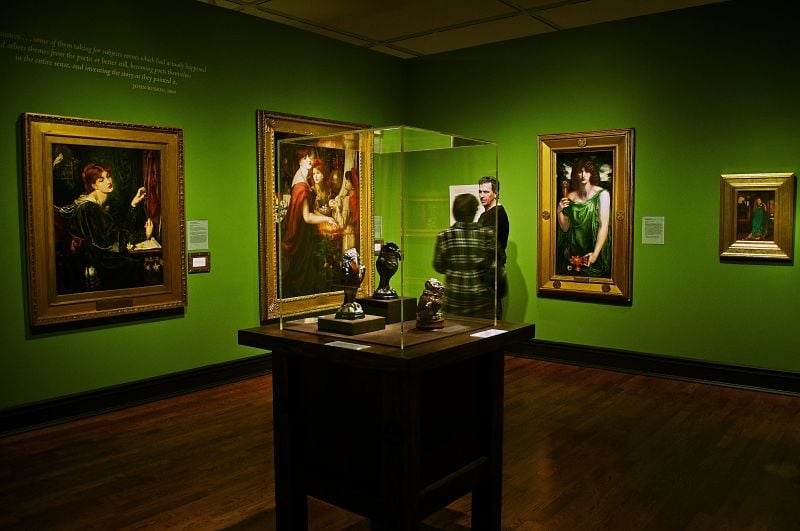
Museum, Art museum
Address: Bulevardul Tomis 82-84, 900178 Constanța
Roman Agora Museum

Museum
Address: 12 Piața Ovidiu, Constanța
Vega Beach
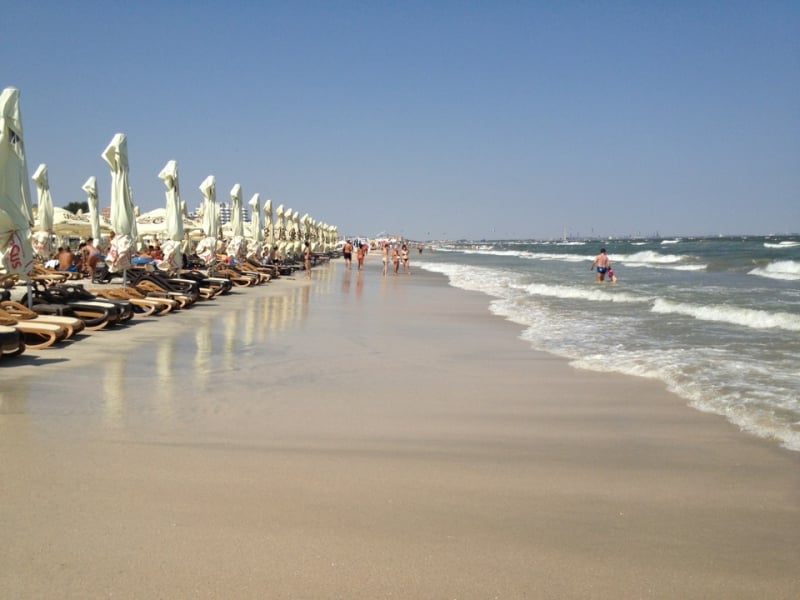
Beach
Address: Bd. Mamaia, Constanța
Parcul Rotterdam
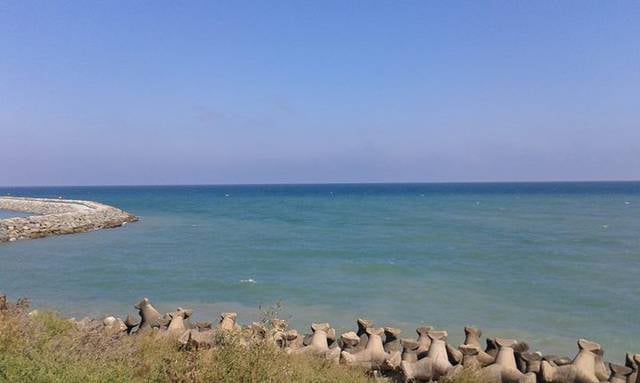
Park, Relax in park
Address: Strada Rotterdam, Faleza Nord, Constanța
Statuia lui Anghel Saligny
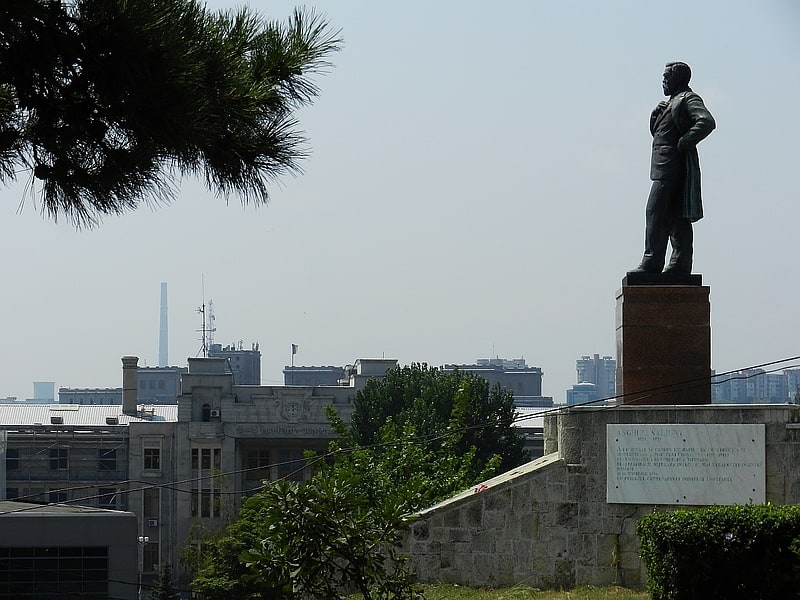
Monuments and statues